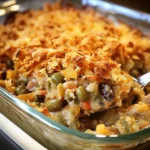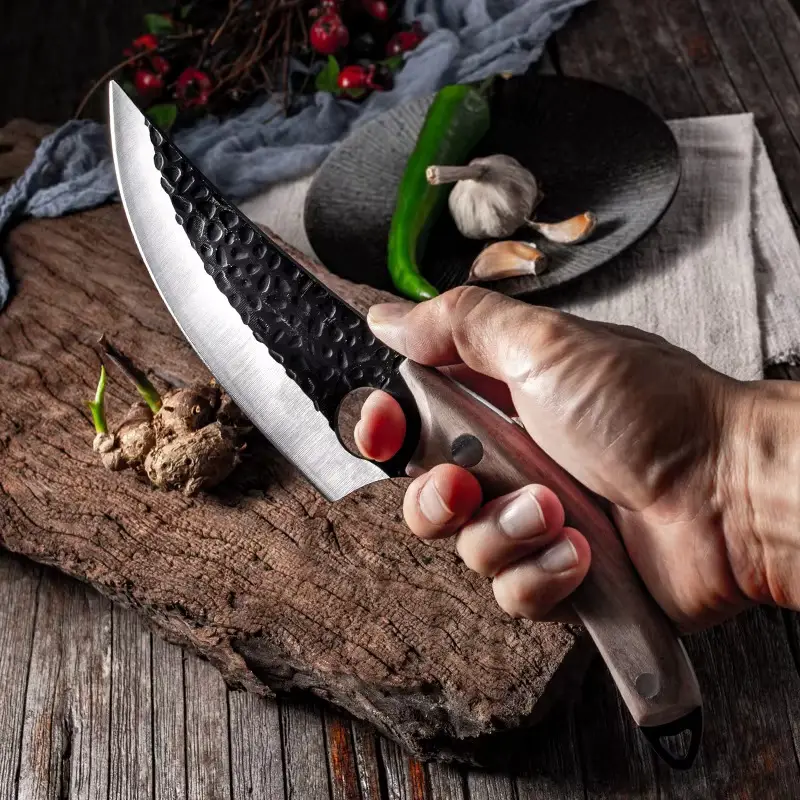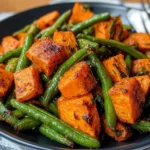Easter at our house is always a vibrant, joyful affair, filled with the laughter of children hunting for eggs, the scent of blooming spring flowers, and, of course, the aroma of delicious food wafting from the kitchen. While ham and lamb might be traditional centerpieces for some, our family has always gravitated towards lighter, brighter flavors that truly celebrate the season’s fresh bounty. And for years now, no Easter feast has been complete without our Classic Veggie Bean Easter Casserole.
This isn’t your grandma’s heavy, cream-of-something casserole. Imagine tender cannellini and Great Northern beans mingling with the sweetness of spring peas, the earthy goodness of asparagus, and the vibrant crunch of carrots and bell peppers, all enveloped in a creamy, flavorful sauce and topped with golden, buttery breadcrumbs. It’s a symphony of textures and tastes that perfectly embodies the spirit of Easter – fresh, vibrant, and utterly comforting.
Honestly, this recipe has become a bit of a legend in our family. Even the most ardent meat-lovers at the table find themselves going back for seconds (and thirds!). What I love most about it, besides the incredible flavor, is its versatility. It’s elegant enough to grace your Easter dinner table, yet simple enough to whip up for a casual spring brunch or potluck. Plus, it’s a fantastic way to get everyone, especially kids, to enjoy a hearty serving of vegetables. This year, as you plan your Easter menu, I urge you to give our Classic Veggie Bean Easter Casserole a try. I promise, it will become a cherished tradition in your home, just as it has in ours. Get ready to experience a true taste of spring!
Ingredients: Spring’s Bounty in Every Bite
Here’s what you’ll need to create this springtime sensation. We’ve focused on fresh, seasonal ingredients to maximize flavor and nutritional value. Remember, quality ingredients are key to a truly exceptional casserole.
- Cannellini Beans (2 cans, 15 oz each): These creamy white beans provide a wonderfully smooth texture and mild, nutty flavor that forms the heart of our casserole. Be sure to drain and rinse them well.
- Great Northern Beans (1 can, 15 oz): Slightly smaller and firmer than cannellini beans, Great Northern beans add another layer of texture and a subtle, delicate taste, creating a balanced bean base. Drain and rinse these as well.
- Asparagus (1 pound): The quintessential spring vegetable! Choose firm, bright green stalks. We’ll be trimming and chopping these into bite-sized pieces for tender, slightly grassy notes.
- Frozen Peas (1 cup): Sweet and tender, frozen peas bring a pop of vibrant green and a touch of sweetness that complements the other vegetables perfectly. No need to thaw them beforehand.
- Carrots (2 medium): Adds sweetness, color, and a satisfying crunch. We’ll peel and dice these into small pieces to ensure they cook through evenly and add a pleasant texture.
- Red Bell Pepper (1 medium): For sweetness, vibrant color, and a slightly crisp bite. We’ll dice this to match the carrots in size.
- Yellow Onion (1 medium): The aromatic base for our flavorful sauce. We’ll finely chop this to release its savory essence as it cooks.
- Cremini Mushrooms (8 oz): These earthy mushrooms add depth of flavor and a meaty texture to our vegetarian casserole. Slice them for even cooking.
- Butter (½ cup, 1 stick): For richness and flavor in our creamy sauce. You can substitute with olive oil for a slightly lighter, vegan option.
- All-Purpose Flour (⅓ cup): To thicken our sauce to the perfect creamy consistency. Gluten-free flour blends can also be used.
- Milk (3 cups): The base of our creamy sauce. Whole milk provides the richest flavor, but 2% or even plant-based milk like oat or almond milk will work well.
- Vegetable Broth (1 cup): Adds depth of flavor to the sauce and helps to create the perfect consistency. Low-sodium broth is recommended.
- Parmesan Cheese (½ cup, grated): For a salty, savory, and nutty flavor that enhances the creaminess. For a vegan option, nutritional yeast can be used for a cheesy flavor.
- Fresh Thyme (2 teaspoons, chopped): Adds a delicate, earthy, and slightly lemony aroma that complements the spring vegetables beautifully.
- Fresh Parsley (2 tablespoons, chopped): For a fresh, herbaceous note and a vibrant green garnish.
- Garlic (2 cloves): Essential for savory depth. Mince it finely to release its aromatic oils.
- Dried Rosemary (½ teaspoon): Adds a warm, piney aroma that pairs wonderfully with beans and vegetables.
- Nutmeg (pinch): A subtle hint of warmth and spice that elevates the creamy sauce. Freshly grated is best, but ground nutmeg works too.
- Salt and Black Pepper: To taste. Essential for seasoning and bringing out all the flavors.
- Breadcrumbs (1 cup, Panko or regular): For a crispy, golden topping. Panko breadcrumbs offer extra crunch.
- Melted Butter (2 tablespoons): To toss with the breadcrumbs for a rich, golden, and flavorful topping. Olive oil can be used for a vegan option.
Instructions: Crafting Your Veggie Bean Easter Casserole
Follow these simple steps to bring this delightful casserole to life. Don’t be intimidated; it’s easier than you might think! The key is to take it one step at a time, and soon you’ll be enjoying the fruits (or vegetables and beans!) of your labor.
- Preheat your oven to 375°F (190°C). This ensures the oven is at the right temperature when you’re ready to bake the casserole for even cooking and a perfectly golden top.
- Prepare the vegetables: Wash and trim the asparagus, then cut it into 1-inch pieces. Peel and dice the carrots and red bell pepper into small, uniform pieces (about ¼ inch). Dice the yellow onion and slice the cremini mushrooms. Mince the garlic cloves.
- Sauté the aromatics and vegetables: In a large, oven-safe skillet or Dutch oven (at least 12 inches in diameter), melt the butter over medium heat. Add the diced onion and sauté for 5-7 minutes, or until softened and translucent. Add the minced garlic and sauté for another minute until fragrant. Be careful not to burn the garlic.
- Add the mushrooms and carrots: Add the sliced mushrooms and diced carrots to the skillet. Cook for 8-10 minutes, stirring occasionally, until the mushrooms have softened and released their moisture and the carrots are slightly tender.
- Incorporate the asparagus and bell pepper: Add the chopped asparagus and diced red bell pepper to the skillet. Cook for another 5-7 minutes, stirring occasionally, until the asparagus is bright green and slightly tender-crisp, and the bell pepper is softened but still retains a bit of bite.
- Make the creamy sauce: Reduce the heat to medium-low. Sprinkle the flour over the vegetables in the skillet and cook for 1-2 minutes, stirring constantly, to create a roux. This helps thicken the sauce and prevents lumps. Gradually whisk in the milk and vegetable broth, a little at a time, ensuring each addition is fully incorporated before adding more. Continue whisking until the sauce is smooth and starts to thicken slightly.
- Season the sauce: Stir in the dried rosemary, fresh thyme, and a pinch of nutmeg. Season generously with salt and black pepper to taste. Remember to taste and adjust seasonings as needed.
- Add the beans and peas: Gently stir in the drained and rinsed cannellini beans, Great Northern beans, and frozen peas into the sauce and vegetable mixture. Mix everything together until well combined and heated through.
- Stir in the Parmesan cheese: Remove the skillet from the heat and stir in the grated Parmesan cheese (or nutritional yeast for vegan). Mix until the cheese is melted and incorporated into the sauce, making it even creamier and more flavorful.
- Prepare the breadcrumb topping: In a small bowl, combine the breadcrumbs and melted butter (or olive oil). Toss to coat the breadcrumbs evenly.
- Assemble and bake the casserole: Sprinkle the buttered breadcrumbs evenly over the top of the casserole in the skillet.
- Bake for 20-25 minutes: Bake in the preheated oven for 20-25 minutes, or until the casserole is bubbly around the edges and the breadcrumb topping is golden brown and crispy.
- Rest and Garnish: Let the casserole rest for 5-10 minutes before serving. This allows the sauce to thicken slightly and the flavors to meld together. Garnish with fresh chopped parsley before serving for a pop of color and fresh flavor.
- Serve and Enjoy! Serve hot and enjoy your delicious and vibrant Veggie Bean Easter Casserole!
Nutrition Facts: Wholesome Goodness in Every Serving
This Veggie Bean Easter Casserole is not only delicious but also packed with nutrients. It’s a guilt-free way to indulge this Easter season, providing a good source of protein, fiber, and essential vitamins and minerals. Please note that these are approximate values and can vary based on specific ingredient brands and portion sizes.
Servings: 8
Calories per Serving: Approximately 350-400 calories
Per Serving (Approximate Values):
- Protein: 15g
- Fiber: 10g
- Vitamin C: 25% DV (Daily Value)
- Iron: 15% DV
This casserole is a good source of plant-based protein from the beans, dietary fiber from the beans and vegetables, and Vitamin C from the bell pepper and asparagus. It also provides a decent amount of iron. Enjoy this nutritious and delicious Easter dish!
Preparation Time: Easy and Efficient
This recipe is designed to be relatively straightforward and efficient, perfect for busy Easter preparations. Here’s a breakdown of the time involved:
- Prep Time: 25-30 minutes (This includes washing, chopping vegetables, and gathering ingredients.)
- Cook Time: 45-50 minutes (This includes sautéing vegetables, making the sauce, and baking the casserole.)
- Total Time: Approximately 1 hour 10 minutes – 1 hour 20 minutes
While the total time might seem a bit lengthy, much of it is hands-off baking time. You can also save time by prepping the vegetables ahead of time – chop them the day before and store them in airtight containers in the refrigerator. This will make the day-of cooking even quicker and smoother. This casserole is a fantastic option for a delicious and satisfying Easter dish without spending the entire day in the kitchen.
How to Serve Your Classic Veggie Bean Easter Casserole
This versatile casserole can be served in a variety of ways, making it a perfect addition to your Easter feast or any spring gathering. Here are some serving suggestions:
- As a Side Dish: Serve alongside your Easter main course, such as a roasted ham (for those who prefer meat options alongside vegetarian dishes), a roasted chicken, or a lentil loaf for a fully vegetarian meal. It pairs beautifully with roasted meats and poultry, adding a vibrant and flavorful vegetable component to the plate.
- As a Vegetarian Main Course: For a vegetarian Easter celebration, this casserole can absolutely stand alone as the star of the meal. Serve it with a fresh green salad and crusty bread for a complete and satisfying vegetarian feast.
- For Easter Brunch: This casserole is also wonderful served warm or at room temperature for Easter brunch. It’s a hearty and flavorful dish that will complement other brunch favorites like quiches, frittatas, and fresh fruit salads.
- Potluck Favorite: Transport this casserole to your next potluck or spring gathering. It travels well and is always a crowd-pleaser, even among meat-eaters.
- Garnishes:
- Fresh Parsley: Sprinkle with freshly chopped parsley before serving for a vibrant pop of color and fresh, herbaceous flavor.
- Lemon Wedges: A squeeze of fresh lemon juice brightens the flavors of the casserole and adds a touch of acidity.
- Extra Parmesan Cheese: Offer extra grated Parmesan cheese at the table for those who want an extra cheesy kick.
- Hot Sauce: For those who like a little spice, a dash of hot sauce can add a pleasant zing.
Additional Tips for Casserole Perfection
Want to elevate your Veggie Bean Easter Casserole to the next level? Here are eight helpful tips and tricks to ensure casserole success:
- Don’t Overcook the Vegetables: Sauté the vegetables until they are tender-crisp, not mushy. This will ensure they retain their texture and flavor during baking. Overcooked vegetables will become bland and lose their appealing texture.
- Taste and Season as You Go: Season each layer of flavor development. Taste the sautéed vegetables and adjust seasonings before adding the sauce. Taste the sauce before adding the beans and peas. This allows you to build layers of flavor and ensures the final casserole is perfectly seasoned to your liking.
- Use Quality Ingredients: The flavor of this casserole is truly enhanced by using fresh, high-quality ingredients. Opt for fresh, firm asparagus, vibrant bell peppers, and good quality canned beans. Fresh herbs also make a significant difference in the overall flavor profile.
- Make it Ahead: This casserole is a fantastic make-ahead dish. You can assemble it completely (up to the baking step) and store it, covered, in the refrigerator for up to 24 hours. When ready to bake, simply add 10-15 minutes to the baking time to ensure it’s heated through and bubbly.
- Customize Your Vegetables: Feel free to adapt the vegetables to your liking or what you have on hand. Broccoli florets, cauliflower, zucchini, or even roasted sweet potatoes would be delicious additions or substitutions. Get creative and use your favorite spring vegetables!
- Vegan Variation: To make this casserole vegan, substitute butter with olive oil, milk with plant-based milk (oat or almond work well), and Parmesan cheese with nutritional yeast. Ensure your breadcrumbs are also vegan-friendly or make your own using vegan bread.
- Add a Protein Boost: For an even heartier casserole, consider adding cooked lentils, quinoa, or crumbled tempeh along with the beans. These additions will boost the protein content and add another layer of texture and flavor.
- Crispy Breadcrumb Topping is Key: Don’t skip the breadcrumb topping! It adds a delightful textural contrast to the creamy casserole and a beautiful golden-brown finish. Make sure to toss the breadcrumbs with melted butter or olive oil for maximum flavor and crispness.
FAQ: Your Veggie Bean Easter Casserole Questions Answered
Got questions about making our Classic Veggie Bean Easter Casserole? We’ve got you covered! Here are some frequently asked questions to help you along the way:
Q1: Can I use dried beans instead of canned beans?
A1: Yes, you can! You’ll need to soak and cook the dried beans beforehand until they are tender. Approximately 1 cup of dried beans will yield about 2-2.5 cups of cooked beans. Make sure to adjust the cooking time accordingly and drain them well before adding to the casserole.
Q2: Can I freeze this casserole?
A2: Yes, you can freeze the assembled casserole before baking. Let it cool completely, then wrap it tightly in plastic wrap and then foil. Freeze for up to 2-3 months. Thaw overnight in the refrigerator before baking as directed, adding about 15-20 minutes to the baking time. You can also freeze leftover baked casserole in individual portions for easy lunches.
Q3: I don’t have Parmesan cheese. Can I use another type of cheese?
A3: Absolutely! Gruyere, Pecorino Romano, or even a sharp cheddar cheese would be delicious substitutes for Parmesan. Choose a cheese that melts well and has a savory flavor profile. For a vegan option, nutritional yeast remains the best bet for a cheesy flavor.
Q4: Can I make this casserole gluten-free?
A4: Yes, you can easily make this casserole gluten-free. Use a gluten-free all-purpose flour blend in place of regular flour for the sauce and ensure your breadcrumbs are gluten-free. Panko breadcrumbs are often not gluten-free, so check the label or opt for gluten-free breadcrumbs made from rice or corn.
Q5: How long will leftovers last in the refrigerator?
A5: Leftover Veggie Bean Easter Casserole will keep well in the refrigerator for 3-4 days when stored in an airtight container. Reheat gently in the oven or microwave until heated through.
Q6: Can I add meat to this casserole for meat-eaters?
A6: While this recipe is designed to be a delicious vegetarian casserole, you could add cooked, crumbled bacon or diced ham for meat-eaters, if desired. Add cooked meat along with the beans and peas in step 8. However, with the robust flavors and textures of the vegetables and beans, you might be surprised how satisfying it is without meat!
Q7: Can I use different herbs?
A7: Yes, feel free to experiment with different herbs! Sage, oregano, or marjoram would also pair well with the beans and vegetables. Fresh herbs are always preferred for the best flavor, but dried herbs can be used in a pinch (use about half the amount of dried herbs compared to fresh).
Q8: My breadcrumb topping is browning too quickly. What should I do?
A8: If your breadcrumb topping is browning too quickly before the casserole is heated through, loosely tent the casserole dish with aluminum foil to prevent further browning while allowing the casserole to continue baking. Remove the foil during the last 5-10 minutes of baking to ensure the topping stays crispy.

Classic Veggie Bean Easter Casserole
Ingredients
Here’s what you’ll need to create this springtime sensation. We’ve focused on fresh, seasonal ingredients to maximize flavor and nutritional value. Remember, quality ingredients are key to a truly exceptional casserole.
- Cannellini Beans (2 cans, 15 oz each): These creamy white beans provide a wonderfully smooth texture and mild, nutty flavor that forms the heart of our casserole. Be sure to drain and rinse them well.
- Great Northern Beans (1 can, 15 oz): Slightly smaller and firmer than cannellini beans, Great Northern beans add another layer of texture and a subtle, delicate taste, creating a balanced bean base. Drain and rinse these as well.
- Asparagus (1 pound): The quintessential spring vegetable! Choose firm, bright green stalks. We’ll be trimming and chopping these into bite-sized pieces for tender, slightly grassy notes.
- Frozen Peas (1 cup): Sweet and tender, frozen peas bring a pop of vibrant green and a touch of sweetness that complements the other vegetables perfectly. No need to thaw them beforehand.
- Carrots (2 medium): Adds sweetness, color, and a satisfying crunch. We’ll peel and dice these into small pieces to ensure they cook through evenly and add a pleasant texture.
- Red Bell Pepper (1 medium): For sweetness, vibrant color, and a slightly crisp bite. We’ll dice this to match the carrots in size.
- Yellow Onion (1 medium): The aromatic base for our flavorful sauce. We’ll finely chop this to release its savory essence as it cooks.
- Cremini Mushrooms (8 oz): These earthy mushrooms add depth of flavor and a meaty texture to our vegetarian casserole. Slice them for even cooking.
- Butter (½ cup, 1 stick): For richness and flavor in our creamy sauce. You can substitute with olive oil for a slightly lighter, vegan option.
- All-Purpose Flour (⅓ cup): To thicken our sauce to the perfect creamy consistency. Gluten-free flour blends can also be used.
- Milk (3 cups): The base of our creamy sauce. Whole milk provides the richest flavor, but 2% or even plant-based milk like oat or almond milk will work well.
- Vegetable Broth (1 cup): Adds depth of flavor to the sauce and helps to create the perfect consistency. Low-sodium broth is recommended.
- Parmesan Cheese (½ cup, grated): For a salty, savory, and nutty flavor that enhances the creaminess. For a vegan option, nutritional yeast can be used for a cheesy flavor.
- Fresh Thyme (2 teaspoons, chopped): Adds a delicate, earthy, and slightly lemony aroma that complements the spring vegetables beautifully.
- Fresh Parsley (2 tablespoons, chopped): For a fresh, herbaceous note and a vibrant green garnish.
- Garlic (2 cloves): Essential for savory depth. Mince it finely to release its aromatic oils.
- Dried Rosemary (½ teaspoon): Adds a warm, piney aroma that pairs wonderfully with beans and vegetables.
- Nutmeg (pinch): A subtle hint of warmth and spice that elevates the creamy sauce. Freshly grated is best, but ground nutmeg works too.
- Salt and Black Pepper: To taste. Essential for seasoning and bringing out all the flavors.
- Breadcrumbs (1 cup, Panko or regular): For a crispy, golden topping. Panko breadcrumbs offer extra crunch.
- Melted Butter (2 tablespoons): To toss with the breadcrumbs for a rich, golden, and flavorful topping. Olive oil can be used for a vegan option.
Instructions
Follow these simple steps to bring this delightful casserole to life. Don’t be intimidated; it’s easier than you might think! The key is to take it one step at a time, and soon you’ll be enjoying the fruits (or vegetables and beans!) of your labor.
- Preheat your oven to 375°F (190°C). This ensures the oven is at the right temperature when you’re ready to bake the casserole for even cooking and a perfectly golden top.
- Prepare the vegetables: Wash and trim the asparagus, then cut it into 1-inch pieces. Peel and dice the carrots and red bell pepper into small, uniform pieces (about ¼ inch). Dice the yellow onion and slice the cremini mushrooms. Mince the garlic cloves.
- Sauté the aromatics and vegetables: In a large, oven-safe skillet or Dutch oven (at least 12 inches in diameter), melt the butter over medium heat. Add the diced onion and sauté for 5-7 minutes, or until softened and translucent. Add the minced garlic and sauté for another minute until fragrant. Be careful not to burn the garlic.
- Add the mushrooms and carrots: Add the sliced mushrooms and diced carrots to the skillet. Cook for 8-10 minutes, stirring occasionally, until the mushrooms have softened and released their moisture and the carrots are slightly tender.
- Incorporate the asparagus and bell pepper: Add the chopped asparagus and diced red bell pepper to the skillet. Cook for another 5-7 minutes, stirring occasionally, until the asparagus is bright green and slightly tender-crisp, and the bell pepper is softened but still retains a bit of bite.
- Make the creamy sauce: Reduce the heat to medium-low. Sprinkle the flour over the vegetables in the skillet and cook for 1-2 minutes, stirring constantly, to create a roux. This helps thicken the sauce and prevents lumps. Gradually whisk in the milk and vegetable broth, a little at a time, ensuring each addition is fully incorporated before adding more. Continue whisking until the sauce is smooth and starts to thicken slightly.
- Season the sauce: Stir in the dried rosemary, fresh thyme, and a pinch of nutmeg. Season generously with salt and black pepper to taste. Remember to taste and adjust seasonings as needed.
- Add the beans and peas: Gently stir in the drained and rinsed cannellini beans, Great Northern beans, and frozen peas into the sauce and vegetable mixture. Mix everything together until well combined and heated through.
- Stir in the Parmesan cheese: Remove the skillet from the heat and stir in the grated Parmesan cheese (or nutritional yeast for vegan). Mix until the cheese is melted and incorporated into the sauce, making it even creamier and more flavorful.
- Prepare the breadcrumb topping: In a small bowl, combine the breadcrumbs and melted butter (or olive oil). Toss to coat the breadcrumbs evenly.
- Assemble and bake the casserole: Sprinkle the buttered breadcrumbs evenly over the top of the casserole in the skillet.
- Bake for 20-25 minutes: Bake in the preheated oven for 20-25 minutes, or until the casserole is bubbly around the edges and the breadcrumb topping is golden brown and crispy.
- Rest and Garnish: Let the casserole rest for 5-10 minutes before serving. This allows the sauce to thicken slightly and the flavors to meld together. Garnish with fresh chopped parsley before serving for a pop of color and fresh flavor.
- Serve and Enjoy! Serve hot and enjoy your delicious and vibrant Veggie Bean Easter Casserole!
Nutrition
- Serving Size: one normal portion
- Calories: 400
- Fiber: 10g
- Protein: 15g






